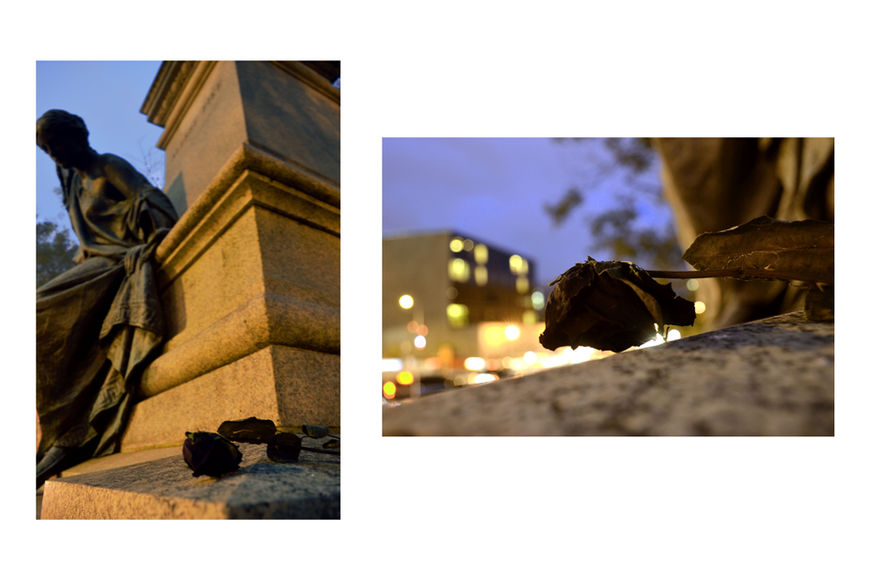Revisiting Memorials
Digital Photographs (2017), Description (2025).
What does it mean to memorialize, remember, commemorate, enshrine?
What does it mean to enshrine a collective memory in stone?
Service Name
Growing up in the DMV, I was surrounded by monuments—icons of history, permanence, and national identity. Museums and memorials were stitched into the rhythm of daily life. I felt a connection to it all, even if I didn’t fully understand why. A kind of pride, maybe. Or a closeness to something larger than myself. Like an heirloom passed down without ceremony—familiar, weighty, quietly inherited.
I remember the stirrings around the Robert E. Lee statue in Virginia. The demonstrations. The debate. A moment that felt like a shift—subtle but significant. A turning point in how we talk about the past, and what we choose to preserve from it. It was just before the 2016 election, a time already thick with tension. But in D.C., the conversations still moved in undertones—like weather changing slowly, without storm.
For context: between 2016 and 2017, the Lee statue in Richmond became a focus of renewed public attention. A commission was formed. Policies were discussed. Protests emerged. Like many monuments across the country, it became more than a sculpture—it became a symbol people looked to, questioned, challenged, defended. And that meant something, even if what it meant wasn’t the same to everyone.
I started to wonder—not just about that statue, but about all of them. Why do we build monuments? What do they ask us to remember? And what do we forget by remembering only certain things?
When collective memory is questioned, so is the idea of the collective itself. Someone, at some point, decided who was worth honoring—allocated funds, commissioned artists, moved mountains, so that a particular story would last. That kind of permanence takes intention. Labor. Belief.
So I began revisiting the places I thought I already knew—memorials, statues, parks I hadn’t set foot in for years. I wasn’t sure what I was looking for. A feeling, maybe. Some clarity. Or maybe just the chance to see with different eyes.
It’s been eight years since I took those photographs. And now, in August 2025, there’s a strange sense of return. The conversation around monuments has resurfaced—this time louder, more official, shaped by statements from those in power. What once felt like quiet cultural undercurrents now echoes in press briefings, policy proposals, and the physical reappearance of long-absent figures.
And so I find myself circling back to the same questions.
What does it mean to enshrine memory?
To walk past a statue and feel seen—or not seen at all?
To build something meant to last, even as meanings shift?
Perhaps the act of revisiting monuments—those we know well, and those we’ve barely noticed—isn’t just about remembering the past.
Perhaps it’s also about paying attention to the present.
Not to decide what’s right or wrong,
but to notice what endures, what reappears,
and what it quietly says about who we are now.










